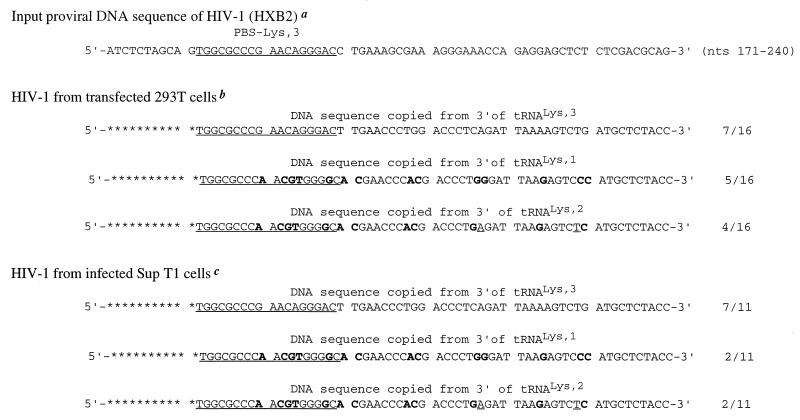FIG. 3.
Frequencies with which tRNA1Lys, tRNA2Lys, and tRNA3Lys are used in the initiation of reverse transcription of HIV-1 isolated from transfected 293T cells and infected SupT1 cells. (a) PBS and surrounding sequence in wild-type proviral DNA of HIV-1 (HXB2 isolate) used for transfection of 293T cells. (b) DNA sequences recovered from endogenous reverse transcription-PCR conducted with HIV-1 produced from transfected 293T cells. The identities of tRNAs used as primers in the initiation of reverse transcription were determined by their complementary DNA sequence. The 18 nt (located in the PBS region) that were copied from the 3′ 18 nt of tRNA3Lys or tRNA1Lys and tRNA2Lys are underlined. Nucleotides in the sequences copied from tRNA1Lys and tRNA2Lys that are different from those in the sequence copied from tRNA3Lys are in boldface. The 2 nt that differ between tRNA1Lys and tRNA2Lys are also underlined. Identical nucleotides in the recovered DNA sequences to that in the input proviral DNA are represented by asterisks. (c) DNA sequences recovered from endogenous reverse transcription-PCR on HIV-1 produced from infected SupT1 cells. Frequencies (7/16, 5/16, etc.) of DNA sequences extended from each of tRNA1Lys, tRNA2Lys, and tRNA3Lys in PCR-amplified DNA clones are given to the right.

